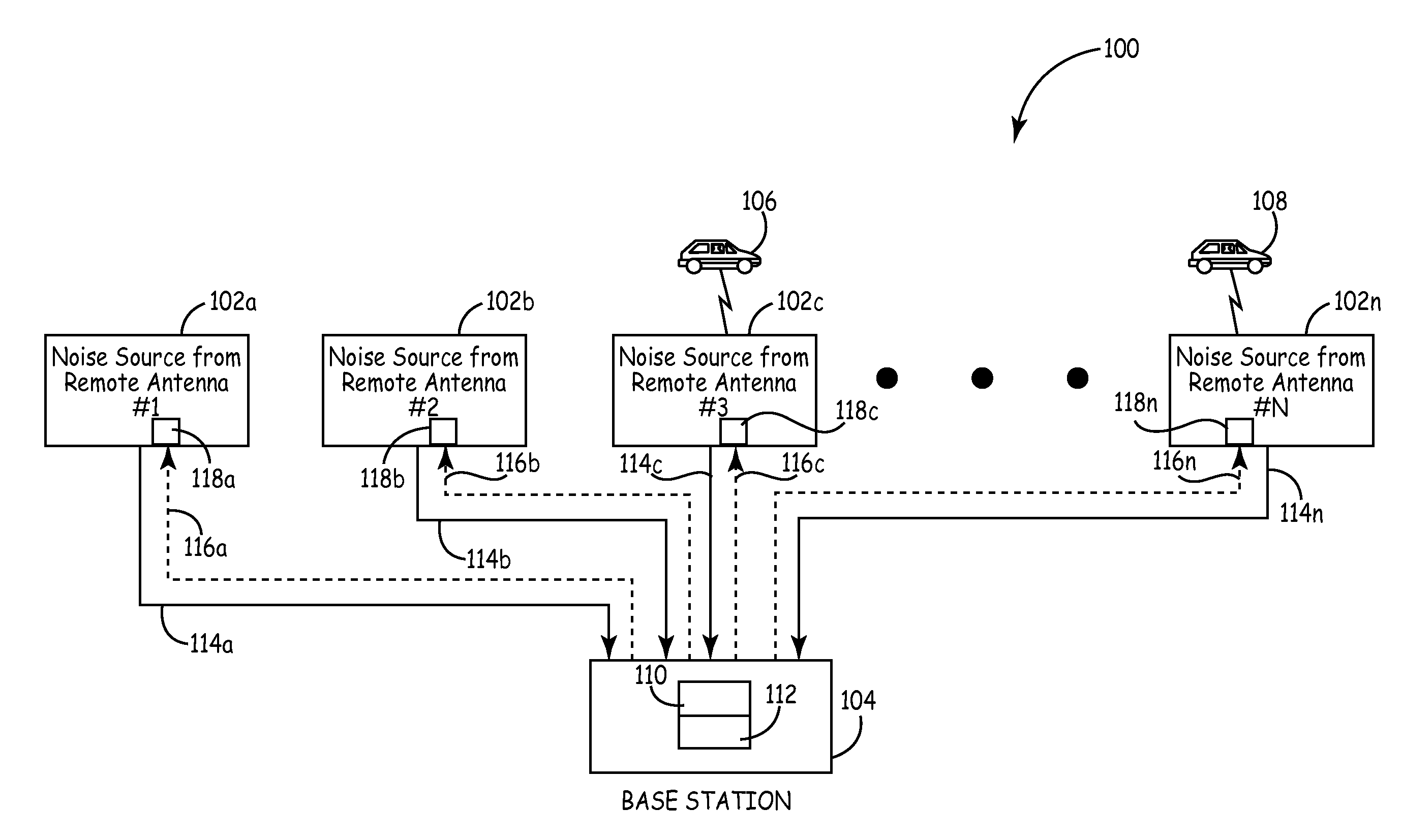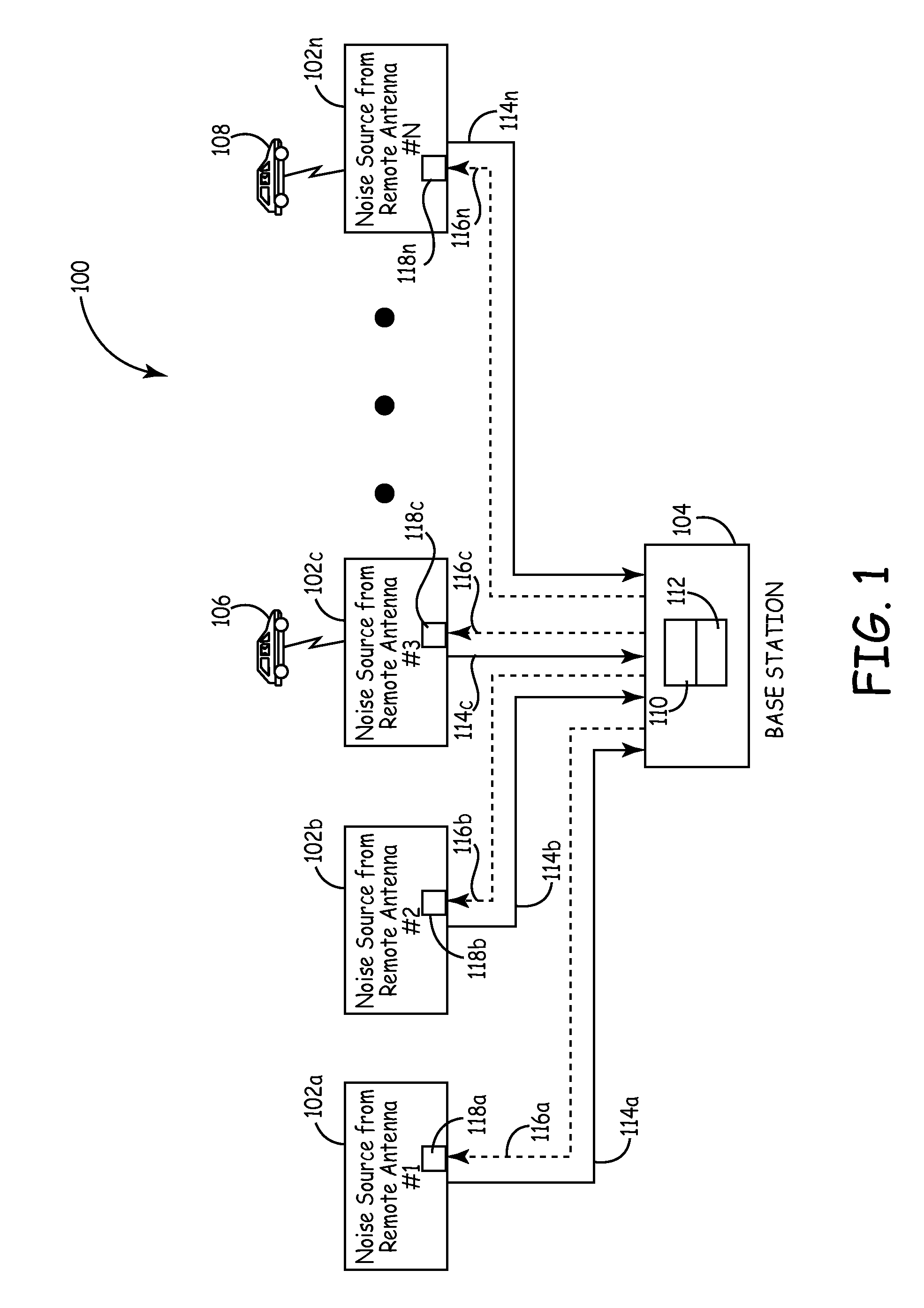Method and system for reducing uplink noise in wireless communication systems
a wireless communication and wireless communication technology, applied in the field of wireless communication, can solve the problems of increasing affecting the reception and detection of the base station receiver, and varying levels of degradation of the radiation signal, so as to reduce the overall noise floor, reduce the output gain level, and reduce the noise contribution
- Summary
- Abstract
- Description
- Claims
- Application Information
AI Technical Summary
Benefits of technology
Problems solved by technology
Method used
Image
Examples
Embodiment Construction
)
[0010]With reference now to the figures, FIG. 1 depicts a block diagram of an example wireless communication system 100, which can be used to implement one or more embodiments of the present invention. For at least one example embodiment, system 100 can be used to implement a cellular communication system including a network configured with a plurality of cells (e.g., macro-cells, micro-cells, pico-cells, or a combination thereof). More generally, system 100 can be used to implement any suitable wireless communication system, subsystem or network including a plurality of smaller antennas (e.g., at remote locations), and each of the smaller antennas' transmissions contribute a significant amount of noise to the overall noise floor. For clarity, the term “noise floor” may be defined as the measure of a signal created from the sum of all the noise sources and unwanted signals within the system, subsystem or network involved.
[0011]For one or more example embodiments, system 100 represe...
PUM
 Login to View More
Login to View More Abstract
Description
Claims
Application Information
 Login to View More
Login to View More - R&D
- Intellectual Property
- Life Sciences
- Materials
- Tech Scout
- Unparalleled Data Quality
- Higher Quality Content
- 60% Fewer Hallucinations
Browse by: Latest US Patents, China's latest patents, Technical Efficacy Thesaurus, Application Domain, Technology Topic, Popular Technical Reports.
© 2025 PatSnap. All rights reserved.Legal|Privacy policy|Modern Slavery Act Transparency Statement|Sitemap|About US| Contact US: help@patsnap.com



